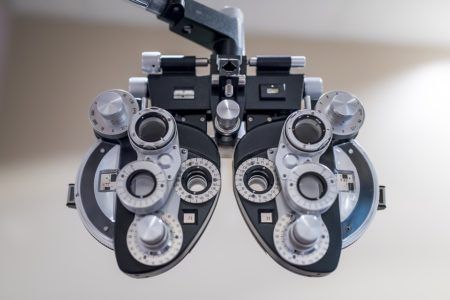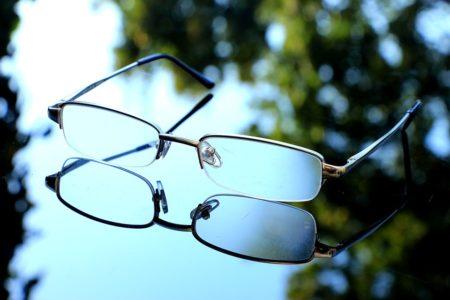What are eye diseases? Types and problems
In another post, we already told you everything about the cataracts What are your symptoms? This time, we expanded the range of action. What are eye diseases ? Types and problems
What are eye diseases?
Respond to what they are Eye diseases is as simple as saying that they are the ailments that affect the eyes and their area of influence. From the eyeball to the musculature, through the lacrimal system or the eyelids. Being a sensitive zone, with mucosa and constantly wet, the variety of eye diseases is wide and a large fork in terms of gravity.

In this case, in addition to telling you what are eye diseases, let's review what types of eye diseases exist. Basically, because many of them are common and affect a very high percentage of the population. For any unknown symptoms, it is best to go to the ophthalmologist.
Types of eye diseases
The types of eye diseases They are so many that they are incomprehensible in an article. In this case, we have divided them into three groups: common , rare and hereditary , taking the most common in each case. These are the types of eye diseases that exist.
The most common eye diseases
The most common eye diseases they do not have to be less serious. On the contrary, in some cases are minor and leave in a few days, but in other cases may lead to blindness . And it is that the current rhythm of life, the stress to which it is subjected to the eyes and the amount of visual stimuli, make that they are increasingly sensitive.

These are the most common eye diseases
- Hyperopia - There is a when a person sees well from a distance but does not distinguish objects closely. It is the refractive defect contrary to myopia. Of course, hyperopia is not progressive and does not have to go any further. It can be cured with glasses or with laser eye surgery.
- Myopia - More and more, myopia is the ailment that prevents seeing distant objects well, while there are no problems with the near ones It occurs because the focal point is generated in front of the retina and not in the retina. It is also treated with lenses, contact lenses or laser eye surgery.
- Amblyopia - Known as Vague Eye, it is the common disease in children that reduces vision in one eye. It is given by an incorrect connection between the eye and the brain. It is solved with the famous patch in one eye.
- Blindness - It supposes the total loss of vision. A person with blindness is not able to receive visual stimuli, beyond the light of day and night.

- Cataracts - It is a disease that usually comes with age, in which the lens becomes opaque, losing its usual transparency. The result is that the vision of gradually losing, can even lead to blindness if it is not treated. To do so, it requires operation.
- Astigmatism - When the curve of the anterior area of the cornea is not correct, the vision becomes blurred. The treatment for astigmatism are prescription glasses.
- Computer vision syndrome - A recent illness, associated with prolonged use of the computer.It also affects other parts of the body, such as the head (migraine), shoulders and neck.
- Presbyopia - It is the disease that prevents close focusing of nearby objects. To see them, the usual thing is that a person with presbyopia squints eyes

- Strabismus - It is given when the direction of the focus of the eyes is not coordinated. Thus, one of them or both, are diverted to another side. It is a condition that has a solution through surgery or glasses.
- Glaucoma - Glaucoma arises when the intraocular pressure increases, as the drain becomes plugged. Thus, the optic nerve is damaged and causes vision loss, which can be temporary or permanent.
The rarest eye diseases
Below we review some of the rarest eye diseases :
- Nictalopia - Nictalopia is a strange disease that complicates vision with low light and night. The origin of this disease usually comes from malnutrition of the patient or a specific injury.

- Hemeralopia - It is the opposite of nictalopia, that is, complication to see when the light is too bright. Now, it is even more rare than the nictalopía
- Achromatopsia - It is the ailment that prevents certain people from distinguishing some colors. Especially red and green. More commonly known as color blindness. In some cases, patients can only distinguish white, black and gray. It affects 1 in 40,000 people. It also involves a gradual loss of vision.
Hereditary eye diseases
To finish, we review some Hereditary eye diseases :
- Retinitis pigmentosa - It affects 1 in 3,700 people, but is more common in men. It is a hereditary disease that involves a slow but gradual loss of vision. In addition, it leads to night blindness, reduced visual field and difficulty in distinguishing colors. It can end the total blindness of the patient.

- Leber optic atrophy - It is caused by the degeneration of the gangliocytes of the retina and axons. It is a hereditary disease that passes from mother to child, although it develops in adulthood. When it arrives, it directly affects the central vision, causing an optical degeneration. Almost all those affected by this disease, are blind before reaching 50 years.
- Stargardt disease - The possibility of having this disease is 1 in 10,000. It is a hereditary disease, whose technical name is juvenile macular dystrophy. It supposes a gradual loss of the vision, because the macula, zone of greater sensitivity of the retina, is affected. It usually arises in adolescence
Treatment against eye diseases
The treatment against eye diseases > happens, in a non-negotiable way, by going to a specialist. The ophthalmological medicine has given a qualitative jump tremendous in their treatments. To this day, these are much more effective and less invasive .

The success rate in current treatments has skyrocketed and is getting a solution to eye diseases that previously did not have it .Causes, symptoms and treatment


